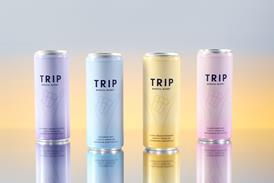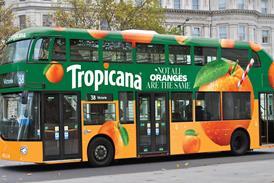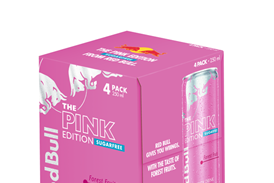Going green was definitely the major theme at this year’s annual NACS trade show for convenience and petroleum retailers, held in Chicago last month.
Making your c-store environmentally friendly isn’t just about saving the planet, it’s also about saving yourself money, according to Michael Lawshe, president of US convenience store design company Paragon Solutions.
He says: “The first myth is that going green is very expensive for a business. Others are that it’s too difficult, or that there’s just too much red tape involved. “Technology and marketing are catching up. As this continues, we’ll have new and exciting ways to go green, save money and be responsible stewards of our resources.” Lawshe says that when it comes to making a convenience store business more eco-friendly, retailers shouldn’t necessarily think it has to be a case of all or nothing. He advises making small changes at first, some of which may seem very obvious, and then monitoring the results.
Convenience Store caught up with Lawshe as he set out his vision in his seminar, Going Green: A Case Study on the Implementation of a Sustainable C-Store Design. He looked at Green Valley Grocery, a Las Vegas-based c-store chain which he says made the decision to cut operating costs alongside making a “concerted effort” to go green.
The store will also benefit from the expertise of lighting specialist LSI, which has provided an energy efficient interior lighting system which will save the store $2,365 (£1,500) a year. It’s pretty basic stuff, but Roberts says the savings soon add up. “Green design is at the cutting edge because we’re actually getting a profit from it,” he explains. “A lot of people run away from it because they think it’s expensive or they’re worried about the technicalities involved and so on. But the fact is that green buildings are less expensive to run.” He says that some of the things he recommends may seem blindingly obvious, but many people don’t try to implement them. “Think about basics like trees. If your outlet faces west and it’s too bright at a certain time of the day, don’t pull down the blinds, just make sure some trees are planted to provide some shade. They’ll also protect the building from the wind and bad weather in the winter. It’s basic common sense.”
Lawshe says: “We looked at the Green Valley site and at new opportunities from both a design perspective and from the perspective of increasing sales. With everyone so concerned about rising energy prices, this is going to get more and more important.” Beadle is keen to implement the design at other stores in the group if the prototype is a success – but only if it’s financially viable. “If it works and makes us money I’m very interested in rolling this out to our other stores,” he asserts.
Green Valley has more than 30 stores, all in the Las Vegas area, and with NACS in Las Vegas next year Lawshe says this site will be on the official store study tour route. He adds that the savings at the store start immediately, but the return on investment “ranges from immediately to two years on from the changes”.
Making your c-store environmentally friendly isn’t just about saving the planet, it’s also about saving yourself money, according to Michael Lawshe, president of US convenience store design company Paragon Solutions.
He says: “The first myth is that going green is very expensive for a business. Others are that it’s too difficult, or that there’s just too much red tape involved. “Technology and marketing are catching up. As this continues, we’ll have new and exciting ways to go green, save money and be responsible stewards of our resources.” Lawshe says that when it comes to making a convenience store business more eco-friendly, retailers shouldn’t necessarily think it has to be a case of all or nothing. He advises making small changes at first, some of which may seem very obvious, and then monitoring the results.
Convenience Store caught up with Lawshe as he set out his vision in his seminar, Going Green: A Case Study on the Implementation of a Sustainable C-Store Design. He looked at Green Valley Grocery, a Las Vegas-based c-store chain which he says made the decision to cut operating costs alongside making a “concerted effort” to go green.
Be eco-friendly
1. Implement recycling programmes
2. Analyse both interior and exterior lighting systems
3. Check all equipment for its energy rating
4. Make the most of natural light
5. Investigate other energy sources such as solar power.
Paragon worked with Green Valley Grocery chief operating officer Cliff Beadle for a year to create a prototype design for the group’s stores. The prototype is due to open early next year, and Green Valley’s intent is to roll out the green initiatives into its other stores. Lawshe expects to adjust the plans as they learn more, but says the base design will stay intact.
Architect Jeffrey Roberts worked on every detail of the design, from general factors such as using as much natural light as possible, to more specific recommendations like fitting energy-saving doors on fridges and freezers. The doors are made by Californian company Anthony International and Lawshe says that while they are more expensive than traditional models, they save a substantial amount of energy and cash. Lawshe says the doors at the Green Valley Grocery prototype store cost $3,300 (£2,100), with payback in less than 15 months.
1. Implement recycling programmes
2. Analyse both interior and exterior lighting systems
3. Check all equipment for its energy rating
4. Make the most of natural light
5. Investigate other energy sources such as solar power.
The store will also benefit from the expertise of lighting specialist LSI, which has provided an energy efficient interior lighting system which will save the store $2,365 (£1,500) a year. It’s pretty basic stuff, but Roberts says the savings soon add up. “Green design is at the cutting edge because we’re actually getting a profit from it,” he explains. “A lot of people run away from it because they think it’s expensive or they’re worried about the technicalities involved and so on. But the fact is that green buildings are less expensive to run.” He says that some of the things he recommends may seem blindingly obvious, but many people don’t try to implement them. “Think about basics like trees. If your outlet faces west and it’s too bright at a certain time of the day, don’t pull down the blinds, just make sure some trees are planted to provide some shade. They’ll also protect the building from the wind and bad weather in the winter. It’s basic common sense.”
Lawshe says: “We looked at the Green Valley site and at new opportunities from both a design perspective and from the perspective of increasing sales. With everyone so concerned about rising energy prices, this is going to get more and more important.” Beadle is keen to implement the design at other stores in the group if the prototype is a success – but only if it’s financially viable. “If it works and makes us money I’m very interested in rolling this out to our other stores,” he asserts.
Green Valley has more than 30 stores, all in the Las Vegas area, and with NACS in Las Vegas next year Lawshe says this site will be on the official store study tour route. He adds that the savings at the store start immediately, but the return on investment “ranges from immediately to two years on from the changes”.
NACS Green Toolkit
Organisers used this year's event to launch the NACS green toolkit, a set of guidelines aimed at businesses all around the globe who are interested in going green but want this action to save them money.
It looks at ways c-store operators have "improved the effect of their stores on the environment, pleased shoppers, increased sales and cut costs".
Described as "a global guide to implementing a green and sustainable convenience store", it includes examples of businesses which are already doing this, including Tesco, Musgrave/Budgens, and Marks & Spencer, plus American chains 7-Eleven and Nice N Easy.
Top tips
● Refrigeration: cut expenses and carbon emissions by using your compressor's waste heat to warm your store in cold weather
● Lighting: not only does low-energy cut utility bills, it can extend the life of produce. Using reflective colours on walls and ceilings maximises light.
● In new builds, retailers have many opportunities to go green. But even an existing store can lower its cooling costs with a white roof coating that reflects sunlight
● Make sure your heating, ventilation and air conditioning units are working efficiently by keeping them clean and out of direct sunlight
● Energy management systems monitor the different areas of your store to control temperature and humidity levels. In the words of the guide, why spend money to heat areas that are already warm? Why have all your lights on when the sunlight is pouring in?
The guide costs $95 (£62) for members and $995 (£646) for non-members. It's free to new international NACS members. For more information, visit www.nacsonline.com
Organisers used this year's event to launch the NACS green toolkit, a set of guidelines aimed at businesses all around the globe who are interested in going green but want this action to save them money.
It looks at ways c-store operators have "improved the effect of their stores on the environment, pleased shoppers, increased sales and cut costs".
Described as "a global guide to implementing a green and sustainable convenience store", it includes examples of businesses which are already doing this, including Tesco, Musgrave/Budgens, and Marks & Spencer, plus American chains 7-Eleven and Nice N Easy.
Top tips
● Refrigeration: cut expenses and carbon emissions by using your compressor's waste heat to warm your store in cold weather
● Lighting: not only does low-energy cut utility bills, it can extend the life of produce. Using reflective colours on walls and ceilings maximises light.
● In new builds, retailers have many opportunities to go green. But even an existing store can lower its cooling costs with a white roof coating that reflects sunlight
● Make sure your heating, ventilation and air conditioning units are working efficiently by keeping them clean and out of direct sunlight
● Energy management systems monitor the different areas of your store to control temperature and humidity levels. In the words of the guide, why spend money to heat areas that are already warm? Why have all your lights on when the sunlight is pouring in?
The guide costs $95 (£62) for members and $995 (£646) for non-members. It's free to new international NACS members. For more information, visit www.nacsonline.com
















No comments yet